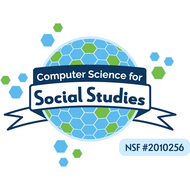
(View Complete Item Description)
These modules are designed to help you get familiar with Python while exploring interactive narrative design, where we put together stories that leave space for the reader to explore, make choices, and engage with the events of the story in a participatory way. Each module in this course follows the same format:Backstory: Unpack the context around the module, set up catalyzing questions to guide the inquiry throughout the module, and establish goals and objectives for your engagement with the moduleGuided Inquiry: Step through a sequence of tutorials and hands-on activities designed to help you learn the basic ideas presented in the modulesPrompt: A tightly-bounded, focused activity designed to facilitate sustained engagement with the ideas presented in the moduleCatalyzing Questions: A series of questions intended to provoke reflection & to put the module’s content in contextEach module is intended to support between 30 and 60 minutes of focused, sustained engagement. You may find it suits you to leave the module in the middle and return to your work; that’s totally fine. Work at your own pace, and don’t hesitate to reach out to your facilitators if you run into any problems.
Material Type:
Unit of Study
Author:
CodeVA Curriculum


















